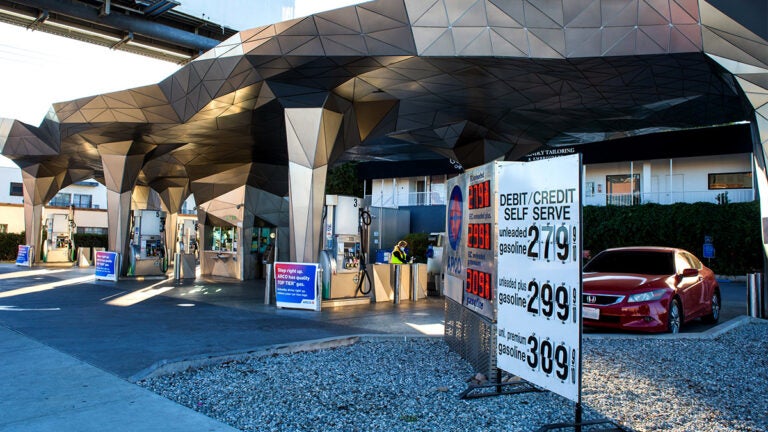
Gas stations of the future could look very different than they do today
In Los Angeles, a city defined in large part by the automobile, gas stations have become inseparable from its identity. Some, like the Union 76 gas station in Beverly Hills with its sweeping Googie roof, are architectural icons. Others are memorable from film appearances, like the Gilmore Filling Station featured in 1982’s action classic 48 hours. Like many institutions in this fast-paced city, however, gas stations may soon have to radically adapt if they wish to survive.
A recent order by California Gov. Gavin Newsom mandates that all new passenger vehicles sold in the state be zero-emission by 2035. As the nation increasingly feels the effects of climate change, this sort of directive could extend to freight trucks, as well. The standard gas station will need to morph into an electric charging depot, presenting a unique opportunity to re-envision space on the urban streets of Southern California.
L.A. County currently claims nearly 600 gas stations in operation, so now is a key time for experts to consider how to help business owners make the transition. USC Dornsife’s 3rd LA Project, USC Dornsife’s Academy in the Public Square, Los Angeles Cleantech Incubator, Audi and Normal Now sponsored by Electrify America have invited six architecture, landscape and urban-design firms to present their vision of what the fueling station of the future could look like. Firms will design a private gas station, a public charging station and a fueling depot for heavy-duty electric trucks, presenting their ideas during “Pump to Plug,” a virtual event taking place Dec. 11.
Electric cars currently need hours to charge; and charging station customers may linger for a meal or to grocery shop. In five to 10 years, charging time could decrease and give people only enough time to grab a quick snack. Vehicles could also become autonomous and drive themselves to connect with a charger. Participants have been asked to present how stations may look in 2022 and in 2032, to reflect the way fueling will continue change in the decades to come.
Firms presenting their ideas include:
- Abalos+Sentkiewicz
- Inaba Williams Architects
- MOS Architects
- Perkins + Will
- Spiegel Aihara Workshop
- Woods Bagot
The agenda includes three different presentations, attendees can join for any of these events:
- The Design of Charging Stations | 1 – 2:30 p.m.
- The Future of Gas Station Sites | 2:45 – 4:15 p.m.
- The Design of Electrified Long-Haul Trucking Depots | 4:30 – 5:30 p.m.
This event will also feature the unveiling of a newly commissioned set of photographs of architecturally significant gas stations across L.A. taken by Janna Ireland.
Founded by Christopher Hawthrone, L.A.’s chief design officer and a professor of the practice of English, USC Dornsife’s 3rd LA Project is a laboratory for urban reinvention. Focusing on the city of Los Angeles as a leading model, the project looks at how cities around the world can become more sustainable, interconnected and equitable.
For more information and to register for this free event, visit the USC Dornsife event calendar >>